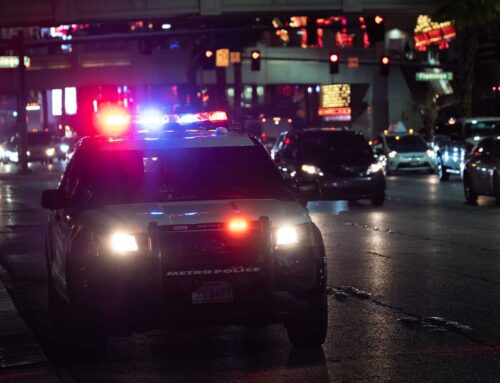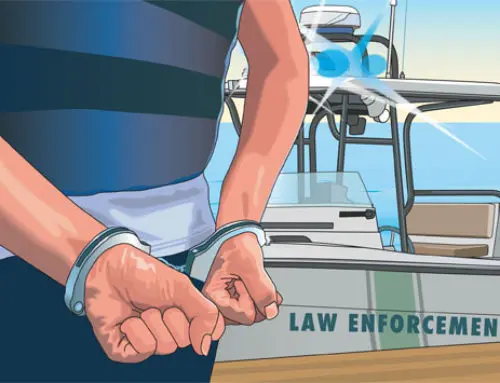Drinking and Driving Statistics and Facts
Drinking and Driving Statistics and Facts – According to National Highway Traffic Safety Administration, after every two minutes, a person is injured in a drunk driving crash. When we talk about an injury do not think about bruises, imagine an organ like a leg or fatality like the loss of life. No man would deny the seduction one or two drinks to relieve themselves some stress or miss a party where a crush is attending. In 2014, the Federal Bureau of Investigation confirmed that over 1.1 million drivers were arrested for DUI caused by narcotics or alcohol consumption.
Alcohol impairment
According to the National Highway Traffic Safety Administration, it is illegal to drive your vehicle with a Blood alcohol content (BAC) or blood alcohol concentration of .08 or greater. Drinking does not allow you to think that you might be impaired, so most of the drunk drivers get behind the wheels with the highest hopes of a successful drive. This is not the case, most of them end up causing accidents. Most of the drivers think that being impaired is caused by the type of drink they take, but they are wrong: impairment is caused by the amount one takes in one sitting.
When we are talking about the alcohol in your blood we are talking about the 20% that was absorbed through the stomach. This absorbed quantity is metabolized in the liver to produce nontoxic substance and since the liver can only metabolize a certain amount at a time the excess alcohol circulates through the body in the bloodstream. However, the circulatory system has a certain limit that it can hold, so if you exceed this limit you start to get impaired and this can lead to a coma or death (when the respiratory (breathing) system slows down and oxygen no longer reaches the brain).
Alcohol impairment is determined by the standard drink which applies to beer, wine distilled spirits. According to the National Highway Traffic Safety Administration, 5 ounces of wine, 1.5 ounces of distilled spirits or 12 ounces of beer have the same amount of alcohol. To determine if you will be sober enough to drive your vehicle you should understand that the average metabolism rate of a person is about one standard drink per hour. Therefore drinking strong coffee, taking a cold shower or exercising might lower the effects of alcohol in your system but time alone is the remedy to sober a person up.
Believe it or not, 2 in 3 people are likely to be involved in a drunk driving accident in a lifetime. In America alone, about 27 people are involved in a fatal accident. You will be surprised that most of the drivers arrested for drunk driving have driven 80 times in that state before their first arrest. But in most cases, those who are involved in drinking and driving account to 50-75% of those that have been convicted before. Arrest data suggests that each day about 3200 drunk driver get arrested.
According to a survey done by the Substance Abuse and Mental Health Services Administration, the rate of drinking and driving is among drivers who fall in the age between 26 and 29. The highest fatal crashes in 2014 were caused by drivers who fall between ages 21 to 24, followed by those between the ages 25 to 34 and lastly the 35 to 44 age range.
In 2013 alone, the population of people that were arrested for driving under the influence of alcohol was about 8.7 million people – more than the population of Texas. In 2014, the number of people injured in drunk driving crashes amounted to 290,000; after every 53 minutes someone dies in drunk driving crashes.
Drunk driving mostly happens during the night when people attend parties and clubs for a bottle of beer or some liquor. According to National Highway Traffic Safety Administration, drinking and driving are likely to happen four times in the night than during the night. In addition, the weekends account for about 29% of the fatal crashes when 16 % of them occurs during the week. Gender is also represented in these statistics since in 2014 males who were arrested for drunk driving compared four times to that of female drivers who were arrested in the same state.
When it comes to costs, the adult driver parts with $500 annually, while it costs the nation about $199 billion every year. The cost also reflects in fatalities which report that almost half of the vehicle drivers test positive for alcohol and substance abuse. It, therefore, accounts to more than $37 billion annually in terms of motor vehicle crashes. Alcohol misuse and abuse are the major cause of drunk driving. There is more to be done to eliminate drunk driving on the roads of America even though drunk driving fatalities have decreased 52% (79% among persons under 21) since 1982.
The habit does not end with one conviction since one-third of all drivers who have been arrested or convicted of drunk driving are considered to be repeat offenders. Some drivers recover from the probation programs but when they resume drinking, in a case of addiction, some can’t help it- 71% of drunk driving fatalities are caused by hardcore drunk drivers. This trend causes havoc on the roads. Seven times is the number that Drivers with a BAC of 0.08% or higher are more likely to have a prior conviction for DWI and being involved in fatal crashes when compared to those without alcohol in their systems.
The fifth survey of alcohol and drug use by drivers conducted between 2013 and 2014 includes both illegal and legal drugs obtained from 300 locations across the country – this was an anonymous and voluntary survey done on more than 9000 drivers. The survey groups drunks driving into three groups: the lowest level being between .005 to .049 BrAC; the medium levels fall between .050 to .079 BrAC; and lastly the highest level being .08+ BrAC.
In the survey, drinking and driving among the drivers are reducing because weekend drivers with a breath alcohol concentration (BrAC) at or above the legal limit of .08 were about 1.5 %. Whereas those with a measurable amount of alcohol represented 8.3 % of the drivers. Drunk driving is not only in adult drivers if you consider that 40% of all 10th graders drink alcohol. This is not news because most of them are involved in private parties which cannot be accounted for. Minor drivers who are required to drive under the supervision of guardians account to most of the accidents.
Sobriety Test
When an officer is curious about your level of impairment, he or she would require breath test, oral fluid test, and blood test samples to determine the BAC. These are also called chemical tests. Implied consent laws are available in most of the states. In addition to the law, when you are arrested you must submit to a chemical test, one gets convicted for refusal and DUI leading to penalties. The officer might also require a urine test when the available tests are not applicable.
In breath analysis, one requires a formula to convert the breathalyzer reading to a blood alcohol level estimate. The Urine analysis is also an indirect measurement of BAC. The highest level of alcohol reading, about an hour after drinking, is obtained from Blood analysis. The accuracy of the three methods is what makes the difference when thinking about taking a sobriety test. Hence, the blood test is the best method so far to determine impairment in drivers. Therefore, the chemical sobriety tests can offer direct evidence of the amount of alcohol in a person’s body system.
If you take a mild drink and you get stopped by an arresting officer, it is advisable to take the breath test when you are driving in a state under the implied consent law. However, if you are sure that you will test a BAC reading of below 0.08% then you can opt for the blood test- take at your own risk if your last drink was less than an hour before you were pulled over.
The devices used for chemical tests depend on their state of use for accuracy. The devices need to be serviced, maintained and calibrated to perform efficiently. The least reliable is the urine test while the most successful chemical test is that of using blood samples (serum). The field sobriety test is vital in determining whether a driver is sober or intoxicated. However, the results or points might be inaccurate since they are dependent on the police officer’s subjective judgment.
On average 46% of the subjects arrested based on field sobriety test are legally intoxicated and roughly 30% are falsely arrested. The NHTSA’s Standardized Field Sobriety Test (SFST) battery tests are the walk the line test (WAT- 68% accurate), the eye test (HGN-77% accurate), and the one leg stand test (OLS- 65% accurate). Therefore, 95% of all DUI arrests are done by police officers with outdated training. Factors that make field sobriety test inaccurate are:
- The police officer due to inadequate skills conducts the tests wrongly leading to incorrect results
- The surrounding conditions of the suspect (lighting or weather) might affect the suspect’s ability to execute the exercises
- The physical appearance of the suspect might be of hindrances such as clothes and ornaments.
During the test, the suspect might be nervous and thus, end up making mistakes to the event that he or she might not act in accordance with the instructions – this gets you points, the higher they are the most prone you become to get arrested. You can easily flunk these tests if your coordination is not right, but you can also get more points if the test is conducted in a hostile manner. Impaired people always have difficulty when divided attention is required, so they are likely to provide evidence of impairment easily.
In 2014, 19% of the traffic deaths among children ages 10 to 14 years involved an alcohol-impaired driver. The child falls victim as a passenger or a pedestrian. The risk of drinking and driving is greater on young people as compared to older people. Motorcyclists also get killed in fatal crashes and the highest percentage recorded in 2013 are from the age of 40 to 49. According to statistics, 40% of fatal crashes represented Motorcyclists with BACs of 0.08% or greater while in 2014 it dropped to 29%.
Reducing drunk driving
To prevent drinking and driving in United States, the federal government has introduced some restrictions like the implied consent law, zero tolerance laws, minimum legal drinking age laws and enforcing the 0.08% BAC laws. During convictions they have introduced the use of ignition interlocks, including first-time offenders, to appear among the requirements in an alcohol program. The community-based approaches working alongside mandatory substance abuse assessment and treatment makes it easy to control repeated crashes in the offenders.
There are plans that every driver must make before going to a social gathering that involves the consumption of alcohol and other substances that might lead to impairment:
- If you are a group, you should identify one person as a designated non-drinking driver
- One should take responsibility for ensuring that your friends do not drive when impaired
- If all of you are drinking, then it is appropriate to take other transportation means such as a cab back home.
- If you are the host, come up with a reminder that alerts your guests on the effects of drinking and driving so that they also plan ahead before drinking
- If you know that you can’t hold your alcohol consumption, then it is proper to plan for accommodation earlier where you are attending a social event.
The number of Americans addicted to alcohol and/or other drugs is currently at 23 million and 17 million people have admitted to drinking and driving. The statistics that suggest that intoxicated drivers who have a current suspended or revoked license contribute to 14% in fatal crashes, has led to increased public awareness. The policies that lead to the prevention, enforcement, treatment, and recovery have a hand in the reduced alcohol-impaired driving deaths.
The implementation of ignition interlock device or breath alcohol ignition interlock device (IID and BAIID) installation used in conviction has helped a lot in reducing recidivism and saving the lives of pedestrians and passengers from repeated offenders. States that require the use of IID for convicted drunk drivers have successfully reduced DUI fatalities by 20% – 52%. The installation of IID reduces 67% of drunk driving repeat offenses. There is increased public support since 90% of respondents in a recent survey support the installation of ignition interlocks for drivers multiple alcohol-impaired driving convictions and 69% of them supported the installation of the device among first offenders.
A driver is required to have the following skills when driving:
- Concentration
- Coordination
- Comprehension,
- Judgment,
- Visual acuity
- Reaction time
When you consume alcohol – a depressant- your central nervous system is affected. The brain functions cease to perform normally. Your psychomotor skills (hand-eye coordination) becomes impaired and you lose your cognitive skills (information-processing skills).
To reduce highway injuries, fatal crashes and vehicular deaths drivers should avoid drinking while driving. Minor drivers should also be monitored to ensure that they do not get misguided. Driving under the influence (DUI) is a crime, that’s why one-third of the 50 states have adopted the per se standard that forbid drinking and driving. More limits are put in place to reduce this havoc on the roads.
The consequence of drinking and driving are far reaching and the effects impact the community at large. Select Insurance Group wishes all drivers to drive safe. We are known for selling the best SR22/FR44/SR50/SR22A Insurance to high-risk drivers. We will ensure that you get back your driver’s license with ease. Fill our auto quote form, we have more services to offer you today.
If you have questions, don’t hesitate to call: (855) 438-7353. One of our licensed agents will help you right away.






